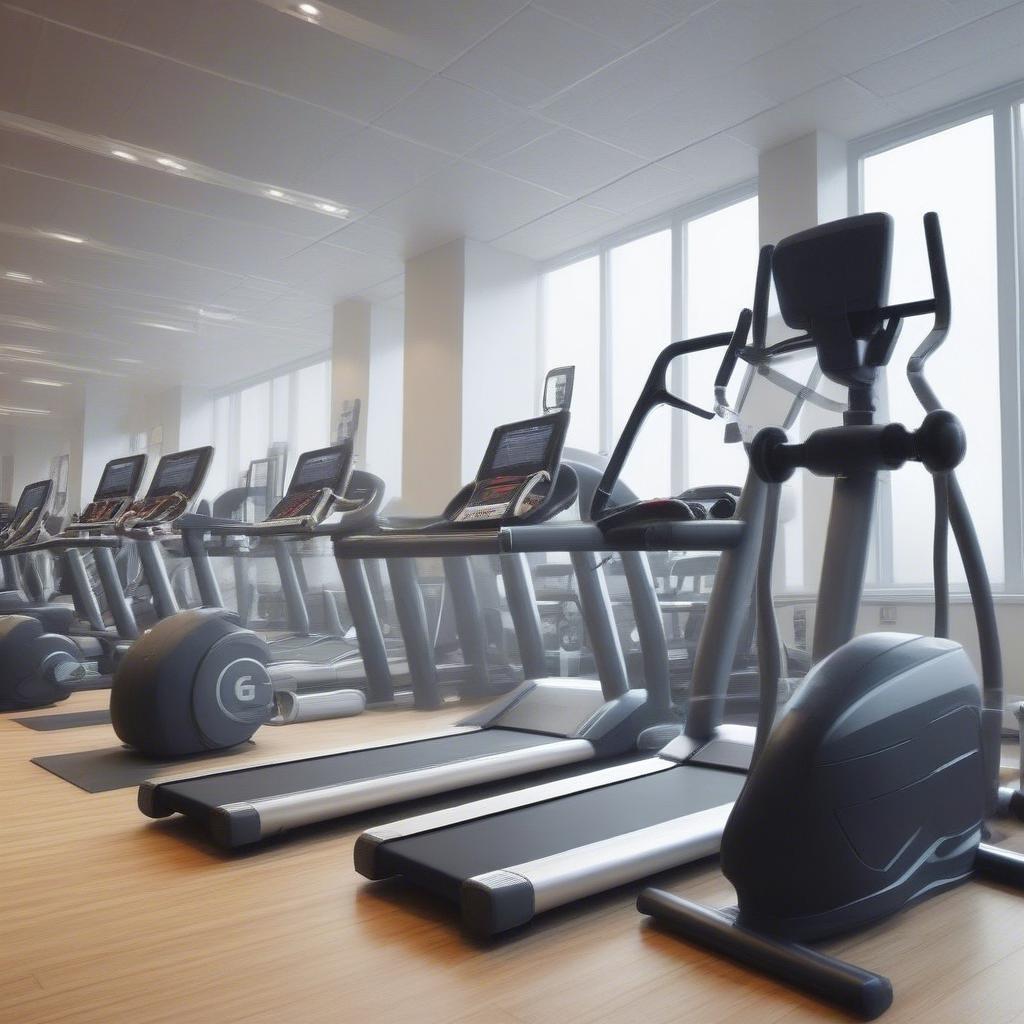
Okay, you’ve poured your heart and soul into creating an amazing gym. You’ve got the best equipment, the most motivating instructors, and a killer workout atmosphere. But if your potential clients can’t find you online, it’s like having a secret superhero base hidden from the world. That’s where gym SEO comes in. This isn’t some complicated, mystical art; it’s about making your website visible to those actively searching for fitness solutions, right in your area. This comprehensive guide will arm you with the search engine marketing strategies you need to climb the rankings and make your fitness website ranking soar.
Why is Gym SEO So Crucial?
Think about it. Where do people go when they’re looking for a new gym? Most likely, they start their search on Google, Bing, or another search engine. If your website isn’t optimized for those searches, you’re essentially invisible. You’re missing out on countless opportunities to connect with individuals actively seeking what you offer: fitness, community, and results. A strong gym SEO strategy is the key to unlocking this potential, and here’s why:
- Increased Visibility: Appearing higher in search results means more people see your website. It’s like putting your gym on the busiest street corner in town, but online.
- Attract Local Clients: SEO lets you target individuals in your specific area, ensuring you reach those most likely to become paying members. No point attracting someone from another state.
- Cost-Effective Marketing: Compared to traditional advertising methods, SEO is incredibly cost-effective. Once you rank, you get consistent traffic, without constant ad spend.
- Establish Credibility: High-ranking websites often convey authority and trustworthiness. People trust search results, so ranking well builds confidence in your gym.
- Boost Membership Growth: Ultimately, the goal of gym SEO is to drive more people to your doors (or website to sign up). By attracting the right traffic, you directly impact your bottom line.
Understanding Your Audience: What Are They Searching For?
Before diving into the nitty-gritty of SEO tactics, it’s vital to understand what your target audience is actually searching for. What words and phrases are they using? This is where keyword research becomes crucial, it’s one of the most vital part for fitness website ranking.
Common Gym-Related Keywords:
- Location-Based: "gym near me," "gym in [city name]," "fitness center in [neighborhood]."
- Type of Gym: "CrossFit gym," "yoga studio," "boxing gym," "weightlifting gym," "24-hour gym."
- Specific Features: "gym with pool," "gym with childcare," "personal training," "group fitness classes," "sauna."
- Benefit-Driven: "weight loss program," "muscle gain training," "stress relief workout," "fitness challenge."
- Cost and Offers: "cheap gym membership," "gym trial offer," "best gym prices."
Actionable Step: Create a spreadsheet and brainstorm all the different keywords that someone might use to search for your gym. Tools like Google Keyword Planner, SEMrush, or Ahrefs can help you find even more relevant keywords. Don’t forget long-tail keywords (phrases with three or more words). Examples: "best boxing classes for beginners in Miami", "personal trainer for weight loss in Chicago".
On-Page SEO: Laying the Foundation for Success
On-page SEO refers to optimizing elements on your own website to improve its ranking. Think of it as making your house as appealing as possible before inviting guests over. Here’s a breakdown of the critical on-page factors:
1. Keyword Optimization: Sprinkle Them In, Don’t Stuff Them
The keywords you identified earlier need to be placed strategically throughout your website. This isn’t about cramming keywords everywhere like a crazy person! It’s about using them naturally and contextually.
- Title Tags: Include your primary keyword (e.g., "Gym in Miami") in the title tag of your homepage and key service pages.
- Meta Descriptions: Write compelling meta descriptions that include relevant keywords and entice people to click. Keep them within the character limit (around 160 characters).
- Headings (H1-H6): Use headings to structure your content. Your H1 should contain your primary keyword, with secondary keywords in the H2s and H3s.
- Content Body: Naturally weave keywords into your website’s copy. Aim for a natural flow; don’t prioritize keyword stuffing.
- Image Alt Text: When adding images, use descriptive alt text that includes relevant keywords. (e.g., "Weightlifting at our gym in NYC").
- URL Structures: Use descriptive URLs that contain keywords (e.g., yourgym.com/personal-training).
2. High-Quality, Engaging Content: The King of SEO
Content is king when it comes to SEO, especially for fitness website ranking. Think about what your audience wants to know. Is it workout tips, nutrition advice, or stories about your current members? Here’s how to create killer content:
- Blog Posts: Publish regular blog posts covering a variety of fitness topics, like "5 Tips for a Killer Leg Day," or "Why You Need to Incorporate Stretching".
- Service Pages: Create detailed pages for each of your services (e.g., personal training, group classes). Clearly explain what makes your services unique. Include testimonials.
- Testimonials and Case Studies: Showcase your success stories. Let prospective members hear from satisfied clients. This boosts trust and credibility.
- Video Content: Incorporate video content – tour of the gym, member testimonials, class demonstrations, or even exercise tutorials, these keep your visitors engaged.
- Local Content: Add content that resonates with the local community (e.g., "Best hiking trails near [city name]").
Actionable Step: Create an editorial calendar outlining what content you’ll produce and when. Aim for consistent posting to keep your website fresh and engaging.
3. Website Structure and Navigation: User Experience is Key
A website that’s easy to navigate is great for both users and search engines. Here’s what to focus on:
- Clear Navigation: Make it easy for visitors to find what they need. Use a clear menu that leads to your most important pages.
- Mobile Responsiveness: Ensure your website is fully responsive and looks great on all devices (desktops, tablets, and smartphones).
- Fast Loading Speed: No one likes a slow website. Optimize your images and use a fast hosting provider to ensure your site loads quickly.
- Internal Linking: Link between your own pages. This helps users explore your website and boosts your SEO.
- Call to Actions: Use clear calls to action (e.g., "Book a Free Class," "Sign Up Today") to guide visitors to take the next step.
Off-Page SEO: Building Your Online Reputation
Off-page SEO refers to actions taken outside of your website to improve your search rankings. It’s about showing Google (and other search engines) that your website is credible and worth linking to. It’s essential for effective search engine marketing.
1. Local Citations: Getting Your Name Out There
Local citations are mentions of your gym’s name, address, and phone number (NAP) on other websites. They play a big role in local gym SEO.
- Google My Business (GMB): Claim and fully optimize your Google My Business profile. Include accurate details, photos, your operating hours, and your website link.
- Online Directories: List your gym on relevant online directories such as Yelp, Yellow Pages, Bing Places, and fitness-specific directories.
- Consistency: Ensure your NAP information is consistent across all platforms. Any discrepancies can confuse search engines and potentially hurt your rankings.
- Niche Directories: Look for gym-specific directories that cater to fitness businesses.
Actionable Step: Conduct an online search for your gym and see where you’re currently listed. Create a spreadsheet and start adding your information to these important directories.
2. Link Building: Earning Trust Through Backlinks
Backlinks are links from other websites to yours. They’re like votes of confidence, showing Google that your website has valuable content. The more high-quality backlinks you have, the better your chances of ranking higher. Here’s how to earn them:
- Guest Blogging: Write guest posts for other fitness blogs and websites in your local area, include a link back to your site.
- Partner with Local Businesses: Collaborate with other local businesses (e.g., nutrition stores, physical therapists) and link to each other’s websites.
- Local Sponsorships: Sponsor local events and ask for a link on their website.
- Create Shareable Content: Publish high-quality, engaging content that others will want to link to naturally. This is the most powerful link-building strategy.
- Broken Link Building: Find broken links on other relevant websites and suggest your own content as a replacement.
Actionable Step: Start by identifying 3-5 local businesses or websites you can reach out to. Don’t spam them; offer something valuable (a piece of content, collaboration) that makes the partnership mutually beneficial.
3. Social Media Marketing: Amplifying Your Reach
Social media isn’t a direct ranking factor, but it plays a vital role in your overall online marketing strategy. It can increase website traffic, improve brand recognition, and help you engage with your target audience.
- Choose the Right Platforms: Focus on the platforms your ideal clients use (e.g., Instagram, Facebook, TikTok).
- Share Content: Promote your blog posts, videos, and other website content on your social channels.
- Engage with Your Audience: Interact with comments and messages, build a community around your gym.
- Run Contests and Giveaways: Generate engagement and attract new followers with social media contests and promotions.
- Use Hashtags: Use relevant hashtags to increase the reach of your posts.
Actionable Step: Audit your existing social media profiles and make sure they’re optimized. Develop a content calendar for your social media channels, ensuring you’re sharing engaging content consistently.
Monitoring and Measuring Your SEO Efforts
SEO isn’t a one-time fix, it’s an ongoing process. You need to regularly monitor your progress and adjust your strategies as needed. This will improve your fitness website ranking. Here’s what to track:
- Website Traffic: Use Google Analytics to track your website traffic, where your visitors come from, and which pages they visit.
- Keyword Rankings: Monitor your keyword rankings using tools like SEMrush or Ahrefs. This will show how well your website is performing in search results.
- Backlinks: Monitor your backlink profile to ensure you’re earning quality links. Use tools like Ahrefs or Moz Link Explorer.
- Conversion Rates: Track your conversion rates (e.g., the percentage of visitors who sign up for a free trial or become a member).
- User Behavior: Look at metrics like bounce rate, pages per session, and time on site. This will give you insights on how users are interacting with your content.
Actionable Step: Set up Google Analytics and Google Search Console on your website if you haven’t already. Review your data monthly and make adjustments to your SEO strategy.
Learn Business: Your Partner in Gym Success
At Learn Business, we understand that running a gym is demanding. You’re juggling memberships, classes, staffing, and more. That’s why we’ve created resources that take the guesswork out of digital marketing. We offer guidance and templates tailored specifically for businesses like yours.
Here’s how Learn Business can help you elevate your gym SEO efforts:
- Customizable SEO Templates: Use our SEO checklist and templates to ensure you don’t miss any crucial step. These are designed for fitness businesses.
- Keyword Research Guidance: We help you identify the most relevant and impactful keywords for your gym. We understand which search terms are used by potential members.
- Website Audit Tools: We offer tools to assess your current website performance and pinpoint areas that need improvement.
- Content Creation Resources: Get access to content ideas, templates, and guides to help you create engaging, SEO-friendly content for your gym.
- Strategy Sessions: Work with our experts to develop a customized SEO strategy for your gym that aligns with your specific goals.
Actionable Step: Explore our website at Learn Business and discover how we can help you take your gym SEO to the next level. We have resources to guide you through each step of the search engine marketing process.
Putting It All Together: Your Gym SEO Action Plan
Alright, you’ve got a wealth of information. Now, it’s time to put it into action. Here’s a step-by-step plan to help you get started:
- Keyword Research: Start by identifying the most relevant keywords for your gym. Focus on local and niche keywords, and understand what your target audience is looking for.
- Website Audit: Conduct a thorough audit of your website to identify areas for improvement. Look at speed, mobile responsiveness, and content quality.
- On-Page Optimization: Optimize your title tags, meta descriptions, headings, content, and images with the right keywords. Structure your content logically for user and search engine.
- Content Creation: Start creating high-quality blog posts, service pages, and videos that cater to your audience’s needs and interests.
- Local Citations: Claim and optimize your GMB profile. List your gym on all relevant local directories and ensure consistent NAP information.
- Link Building: Start building high-quality backlinks by guest blogging, partnering with local businesses, and creating great content.
- Social Media Marketing: Develop a social media strategy to increase engagement, promote content and drive traffic to your website.
- Monitoring and Adjusting: Set up analytics tools and monitor your progress. Adjust your strategy as needed based on the performance of your website and keywords.
- Learn Business Resources: Utilize the resources available at Learn Business to supercharge your SEO efforts and streamline your search engine marketing.
Final Thoughts: Consistency is Key
SEO is not a sprint; it’s a marathon. There’s no magical switch to flip. Consistent effort and a commitment to providing value to your audience is how you build a lasting, high-ranking website. With the right approach, you can transform your gym’s online presence, attract more clients, and achieve your business goals. Embrace the process, learn from your data, and never stop optimizing. Your journey towards higher fitness website ranking starts now! Remember to use this guide and gym SEO will help bring those potential members directly to your door and grow your business.



Leave a Reply